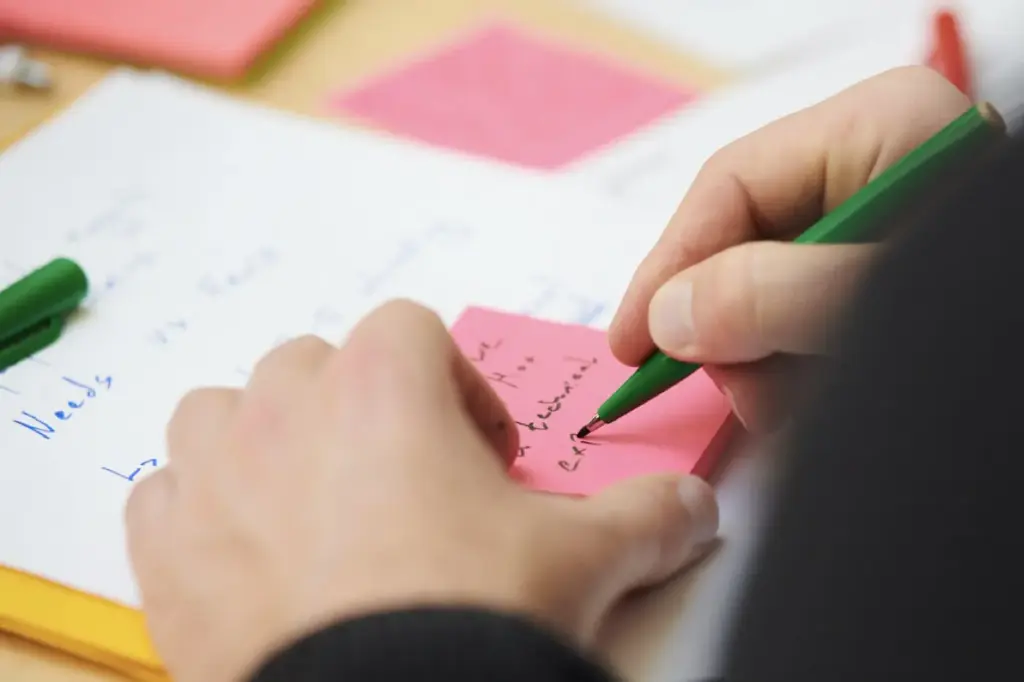CONTACT
PHONE
+49 (0)30 76 74 82 10
ADDRESS
Karl-Marx-Straße 12
12043 Berlin
E-MAIL

A federation embarks on shaping its collaboration.
Pressure to succeed can make you feel Perfect and usually helps you to achieve ambitious company goals. Sometimes, however, it turns around. Then the focus is often on your own interests, needs and those of your own team. This is intensified in times of external change and uncertainty. The actual interests of the target groups and those of other stakeholder groups are lost sight of, to the disadvantage of the whole organization. Many call this silo mentality.
To develop and implement new structures and formats for collaboration so that communicative work becomes more effective and future-proof: Move away from working in specialist departments and towards collaboration in interdisciplinary teams to enable innovation together. With specific concepts geared towards the market and target groups, it is possible to respond to rapidly changing conditions in a results-oriented manner. The resulting knowledge is shared and made open and accessible to the organization.
To develop and implement new structures and formats for collaboration so that communicative work becomes more effective and future-proof: Move away from working in specialist departments and towards collaboration in interdisciplinary teams to enable innovation together. With specific concepts geared towards the market and target groups, it is possible to respond to rapidly changing conditions in a results-oriented manner. The resulting knowledge is shared and made open and accessible to the organization.
Together with our cooperation partner Insel Consulting we developed a concept to support the team building of these topic-specific, interdisciplinary working teams and facilitate their collaboration. We ourselves worked in an interdisciplinary tandem of systemic and agile consultants.
In the kick-off of each working group, the members met as equals and quickly learned to refrain from hierarchy-oriented structures for the most part. Identification was established through the content-related work assignments and the multi-perspective expertise of the employees. The team composition proved to be an initial success factor.
The work process was user-centered and iterative. The teams were encouraged to formulate relevant and customer-related sub-goals as part of the main topic. This created focus. The sub-goals were worked on with an experimental attitude and an iterative approach: Preliminary results were presented and evaluated in feedback meetings with relevant target and stakeholder groups.
The discussion of attitudes supported the joint work in the team. Progress was reflected on in terms of content and at team level: How do we understand each other in an interdisciplinary context and not talk past each other? What helps us to see what we have in common and what is relevant from different and sometimes conflicting points of view? How can initial uncertainty be helpful? The procedure and the results of the working groups were regularly presented and discussed in the management circle and at open events for the entire organization. This focused on connectivity within the overall organization.
Pressure to succeed can make you feel Perfect and usually helps you to achieve ambitious company goals. Sometimes, however, it turns around. Then the focus is often on your own interests, needs and those of your own team. This is intensified in times of external change and uncertainty. The actual interests of the target groups and those of other stakeholder groups are lost sight of, to the disadvantage of the whole organization. Many call this silo mentality.
To develop and implement new structures and formats for collaboration so that communicative work becomes more effective and future-proof: Move away from working in specialist departments and towards collaboration in interdisciplinary teams to enable innovation together. With specific concepts geared towards the market and target groups, it is possible to respond to rapidly changing conditions in a results-oriented manner. The resulting knowledge is shared and made open and accessible to the organization.
Together with our cooperation partner Insel Consulting we developed a concept to support the team building of these topic-specific, interdisciplinary working teams and facilitate their collaboration. We ourselves worked in an interdisciplinary tandem of systemic and agile consultants.
In the kick-off of each working group, the members met as equals and quickly learned to refrain from hierarchy-oriented structures for the most part. Identification was established through the content-related work assignments and the multi-perspective expertise of the employees. The team composition proved to be an initial success factor.
The work process was user-centered and iterative. The teams were encouraged to formulate relevant and customer-related sub-goals as part of the main topic. This created focus. The sub-goals were worked on with an experimental attitude and an iterative approach: Preliminary results were presented and evaluated in feedback meetings with relevant target and stakeholder groups.
The discussion of attitudes supported the joint work in the team. Progress was reflected on in terms of content and at team level: How do we understand each other in an interdisciplinary context and not talk past each other? What helps us to see what we have in common and what is relevant from different and sometimes conflicting points of view? How can initial uncertainty be helpful? The procedure and the results of the working groups were regularly presented and discussed in the management circle and at open events for the entire organization. This focused on connectivity within the overall organization.
+49 (0)30 76 74 82 10
Karl-Marx-Straße 12
12043 Berlin
© INNOKI Engelhardt, Feldhaus und Rummel Innovationsberatende PartG, Berlin, 2025